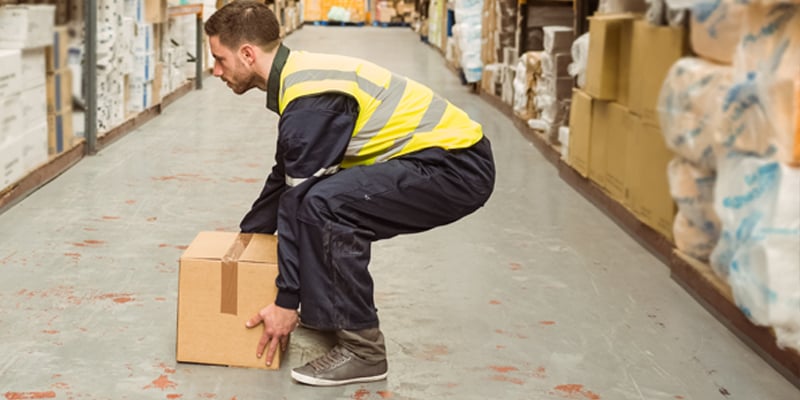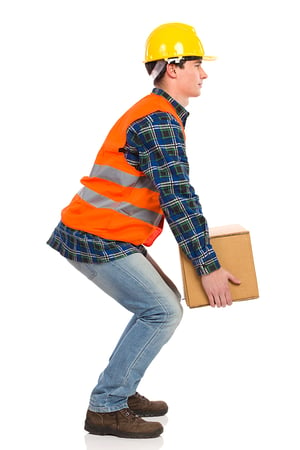
By
Rob Boyle
October 10, 2024
Updated
October 10, 2024

What is manual handling safety and why is it important?
Manual handling causes over one third of all workplace injuries. These include work-related musculoskeletal disorders such as pain and injuries to arms, legs and joints, and repetitive strain injuries of various sorts.
The term manual handling covers a wide variety of activities including lifting, lowering, pushing, pulling and carrying. If any of these tasks are not carried out appropriately, there is a risk of injury.
How does manual handling affect back pain?
Poor body mechanics and bad lifting habits usually "trigger" a back injury-and are more likely to do so if overall physical condition is poor.
For any lifting activity, always take into account your individual capability, the nature of the load, environmental conditions, training and work organization.

What should I do if I have to lift a heavy object manually?
There are some simple things you can do before and during lifting/carrying an object:

Think before lifting/handling
Plan the lift:
- Can handling aids be used?
- Where is the load going to be placed?
- Will help be needed with the load?
Remove obstructions such as discarded wrapping materials.
Consider how you can minimise carrying distances. For a long lift, consider resting the load midway on a table or bench to change grip.
Adjust storage areas to minimize the need to carry out such movements.
Adopt a stable position
The feet should be apart with one leg slightly forward to maintain balance (alongside the load, if it is on the ground). Be prepared to move your feet during the lift to maintain your stability. Avoid tight clothing or unsuitable footwear, which may make this difficult. Avoid lifting from floor level or above shoulder height, especially heavy loads.
Start in a good posture
At the start of the lift, slight bending of the back, hips and knees is preferable to fully flexing the back (stooping) or fully flexing the hips and knees (squatting). Reduce the amount of twisting, stooping, and reaching.
Get a good hold
Where possible, the load should be hugged as close as possible to the body. This may be better than gripping it tightly with hands only.
Keep the load close to the waist
Keep the load close to the body for as long as possible while lifting. Keep the heaviest side of the load next to the body. If a close approach to the load is not possible, try to slide it towards the body before attempting to lift it.
Don’t flex the back any further while lifting
This can happen if the legs begin to straighten before starting to raise the load.
Avoid twisting the back or leaning sideways...
...especially while the back is bent. Shoulders should be kept level and facing in the same direction as the hips. Turning by moving the feet is better than twisting and lifting at the same time.
Keep your head up when handling
Look ahead, not down at the load, once it has been held securely.
Move smoothly
The load should not be jerked or snatched as this can make it harder to keep control and can increase the risk of injury.
Don’t lift or handle more than can be easily managed
Assess the weight to be carried and whether the worker can move the load safely or needs any help. Maybe the load can be broken down to smaller, lighter components. There is a difference between what people can lift and what they can safely lift. If in doubt, seek advice or get help.
Put down, then adjust
If precise positioning of the load is necessary, put it down first, then slide it into the desired position.
